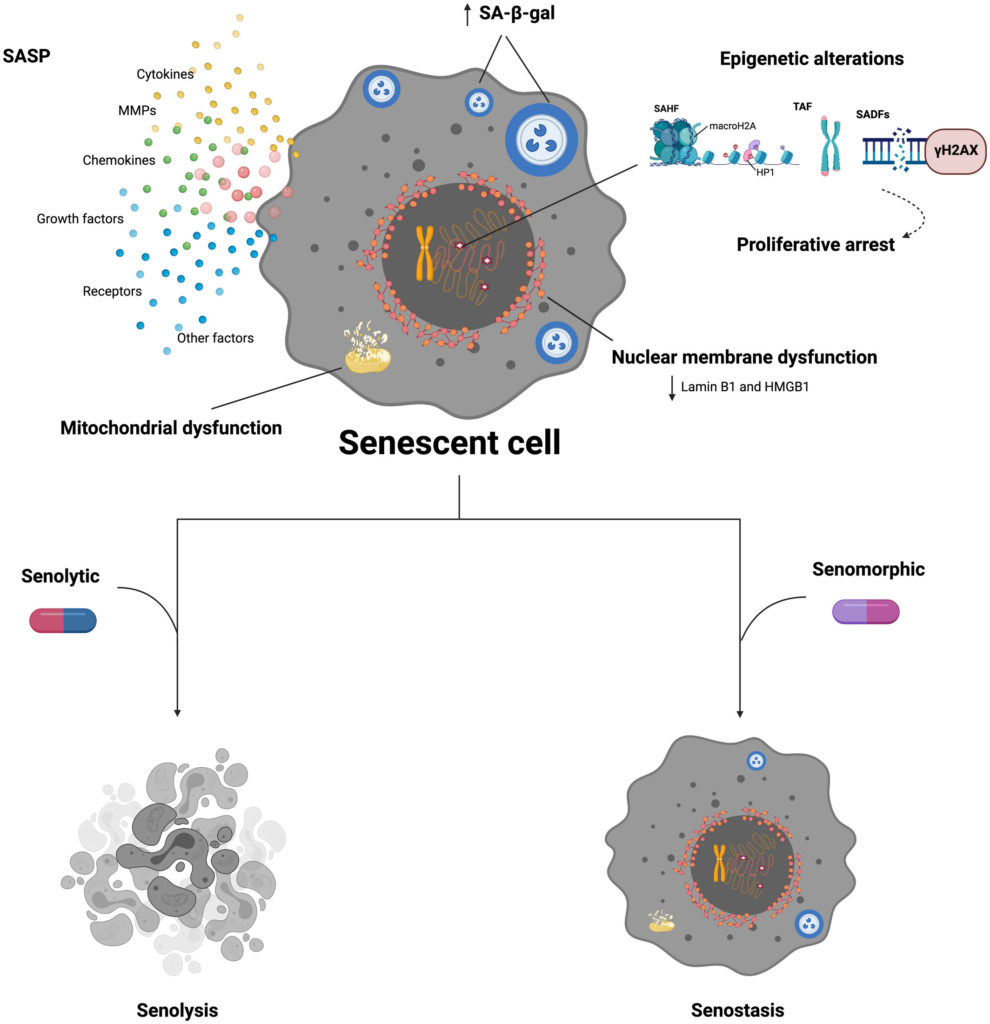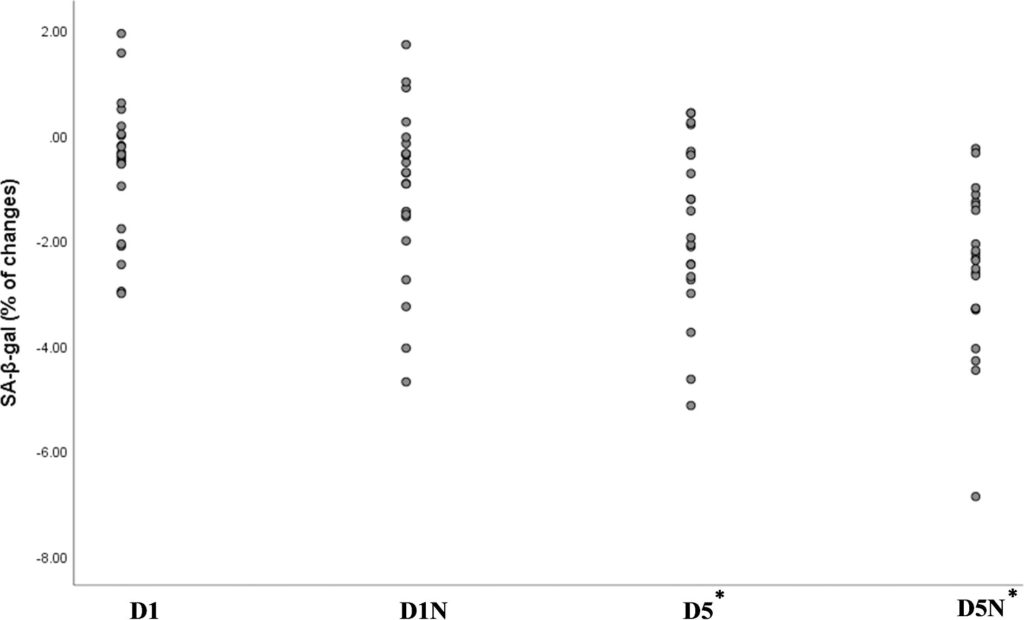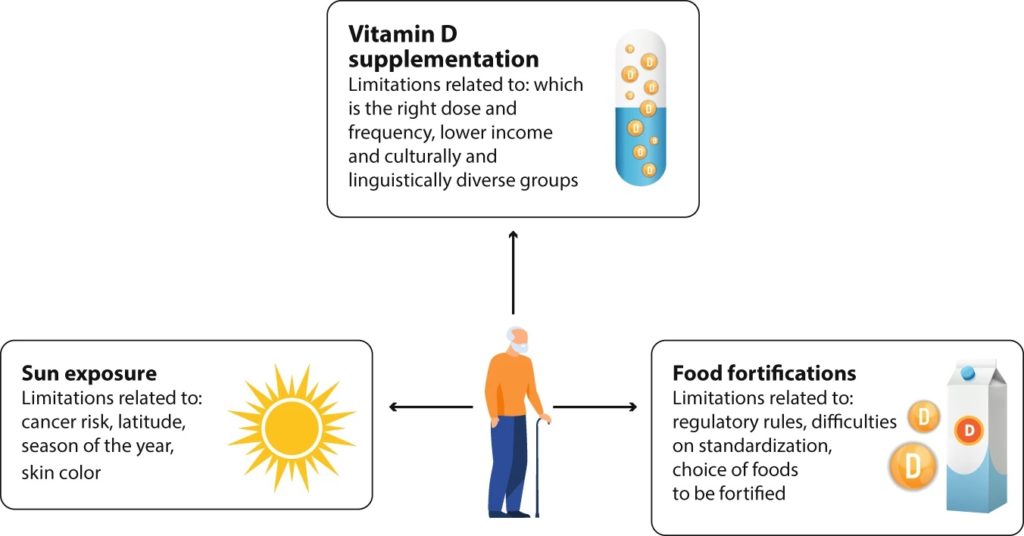NAC Boosts Vitamin D Against Senescent Cells, New Study Reveals
In older adults, N-acetylcysteine (NAC) enhances the effect of vitamin D supplementation against senescent cells, which accumulate in the body with age.
Highlights
- Senescent cells are an age-accelerating consequence of immune system aging.
- Vitamin D and NAC reduce senescent cells in older adults, and NAC appears to enhance vitamin D’s effects.
A profound transformation occurs within our bodies as we age, particularly within our immune system. This age-related alteration in immune function, known as immunosenescence, is not merely a sign of getting older; it’s a fundamental driver of many age-related diseases. It increases our susceptibility to infections and promotes chronic inflammation and even cancer.
Immunosenescence and Senescent Cells
At the heart of immunosenescence lies a fascinating biological phenomenon: senescent cells. These cells have lost their ability to divide and, more importantly, they spew out inflammatory molecules, growth factors, and enzymes. While senescent cells play a vital role in early life, for instance, in wound healing and preventing cancer, their accumulation in older organisms becomes detrimental, contributing to the aging process and the onset of age-related diseases.
Our immune system has evolved to diligently identify and eliminate the burden of senescent cells. However, with age, this crucial surveillance system falters. The efficiency of immune cells, particularly natural killer (NK) cells, in clearing senescent cells diminishes, leading to their accumulation throughout the body. This accumulation, in turn, fuels a vicious cycle of chronic low-grade inflammation, which further exacerbates immunosenescence and accelerates the aging process.
Eliminating Senescent Cells for Better Immune Aging
Given the profound impact of immunosenescence on healthy aging, scientists are actively searching for ways to prevent or even reverse its consequences. Recent studies have hinted at the potential of certain compounds to act as “senotherapeutics”—agents that can selectively eliminate senescent cells or mitigate their harmful effects. Among these, N-acetylcysteine (NAC), a readily available over-the-counter drug, has emerged as a promising candidate.

NAC is not new; it has been used for decades as a mucolytic agent (breaks down mucus) and to treat acetaminophen (e.g., Tylenol) overdose. However, recent research has unveiled its potent antioxidant and anti-inflammatory properties, suggesting its role in reducing senescent cells. Similarly, vitamin D (Vit-D), often hailed for its bone health benefits, is also recognized as a crucial immune-modulating hormone, with the potential to influence immunosenescence.
Vitamin D and NAC Eliminate Senescent Cells
To rigorously assess the impact of NAC and Vit-D on immunosenescence, researchers embarked on a meticulously designed double-blind, randomized controlled trial. This gold-standard approach in clinical research ensures that neither the participants nor the researchers know who is receiving which treatment, minimizing bias and strengthening the reliability of the findings.
A total of 88 overweight or obese individuals over the age of 65 participated in the study. Importantly, all participants included in the study were deficient in Vit-D (blood 25-hydroxyvitamin D levels below 30 ng/mL). They were separated into four groups, determining which intervention they received for eight weeks:
- D1 (control group): 1000 IU Vit-D
- D1N: 1000 IU Vit-D + 600 mg NAC
- D5: 5000 IU Vit-D
- D5N: 5000 IU Vit-D + 600 mg NAC
After eight weeks, the researchers measured blood concentrations of 25-hydroxyvitamin D, abbreviated 25(OH)D, the form of vitamin D in our body. As expected, the groups that took a higher dose of Vit-D (D5 and D5N) exhibited more than a 3-fold increase in 25(OH)D compared to the groups that took the lower dose of vitamin D (D1 and D1N).
Results
The primary outcome of the study focused on peripheral blood mononuclear cells (PBMCs), a critical component of our immune system, circulating in the blood. Researchers assessed the senescence of PBMCs using senescence-associated beta-galactosidase (SA-β-gal) staining. This is a classic method that identifies senescent cells by detecting a specific enzyme activity. The results showed that changes in SA-β-gal were most prominent in the higher-dose Vit-D groups D5 and D5N.

The decrease in SA-β-gal was most pronounced in the D5N group, suggesting that NAC may enhance the effect of 5000 IU of Vit-D. Notably, the researchers did not conduct a statistical analysis to determine if there was a significant difference between groups D5 and D5N, so this is a qualitative interpretation.
Beyond visual staining, the researchers also looked at the activity of specific genes known to be associated with senescence, namely p16 and p21. Compared to the control group (D1), the other groups (D1N, D5, D5N) showed a significant decrease in p16. However, no groups showed a significant decrease in p21. These results hint at NAC enhancing the effect of Vit-D on p16 expression, but again, a direct statistical analysis was not performed to compare groups D5 and D5N.
Who Should Take Vitamin D and NAC?
Scientists have reached the consensus that only those who are deficient in Vit-D should take a Vit-D supplement, if that. They say,
“Regardless of treatment strategies, interventions to restore sufficient vitamin D status will show positive results only in those who are truly deficient. Thus, treatment goals should focus on avoiding 25(OH)D serum levels <30 nmol/l, with a goal to reach levels >50 nmol/l.”
Aside from supplementation, other strategies for avoiding Vit-D deficiency include getting more sun exposure and eating foods rich in Vit-D, such as fatty fish (e.g., salmon), red meat, eggs, and liver. Each option has potential downsides, including cancer risk from sun exposure, costs for supplements, and overconsumption of saturated fats from red meat. As such, one should consult a healthcare provider if experiencing symptoms of vitamin D deficiency, including fatigue, muscle weakness, and bone pain.

In cases of Vit-D deficiency, taking NAC could potentially enhance the effect of Vit-D against senescent cells. Previous studies have shown that Vit-D supplementation reduces markers of cellular senescence in Vit-D-deficient mice and older mice. Nevertheless, it is unclear whether Vit-D supplementation eliminates senescent cells in healthy individuals with normal Vit-D levels, as Vit-D deficiency appears to induce cellular senescence.
NAC
A major limitation of the study is that NAC was not administered alone, making it difficult to parse the individual effects of NAC from Vit-D. Similarly, a previous study, where NAC was combined with glycine, showed that the combo counteracted multiple signs of aging in older adults deficient in glutathione. Whether the anti-aging benefits observed in this study were primarily due to NAC, glycine, or both is unknown. Both glycine and NAC are precursors to the powerful antioxidant glutathione, which is a major contributor to GlyNAC’s (glycine and NAC) effects.
Furthermore, NAC alone has been shown to reduce senescent cells and inflammation in obese individuals. This study is promising as obesity is known to accelerate aging, in that it triggers the accumulation of senescent cells and increases the risk of age-related diseases like type 2 diabetes and heart disease. Additionally, a 2008 study showed that NAC supplementation improved immune function in postmenopausal women. Being a relatively older study, senescent cells were not measured, but improvements in immune function could potentially entail a reduction in senescent cells.
Overall, these studies suggest that NAC may be beneficial to individuals with low glutathione levels, including older adults and obese individuals. Young and healthy individuals may not benefit from NAC supplementation. Symptoms of glutathione deficiency include fatigue, brain fog, sleep problems, and frequent infections. If you have these issues, a healthcare provider may be able to measure your glutathione levels.

